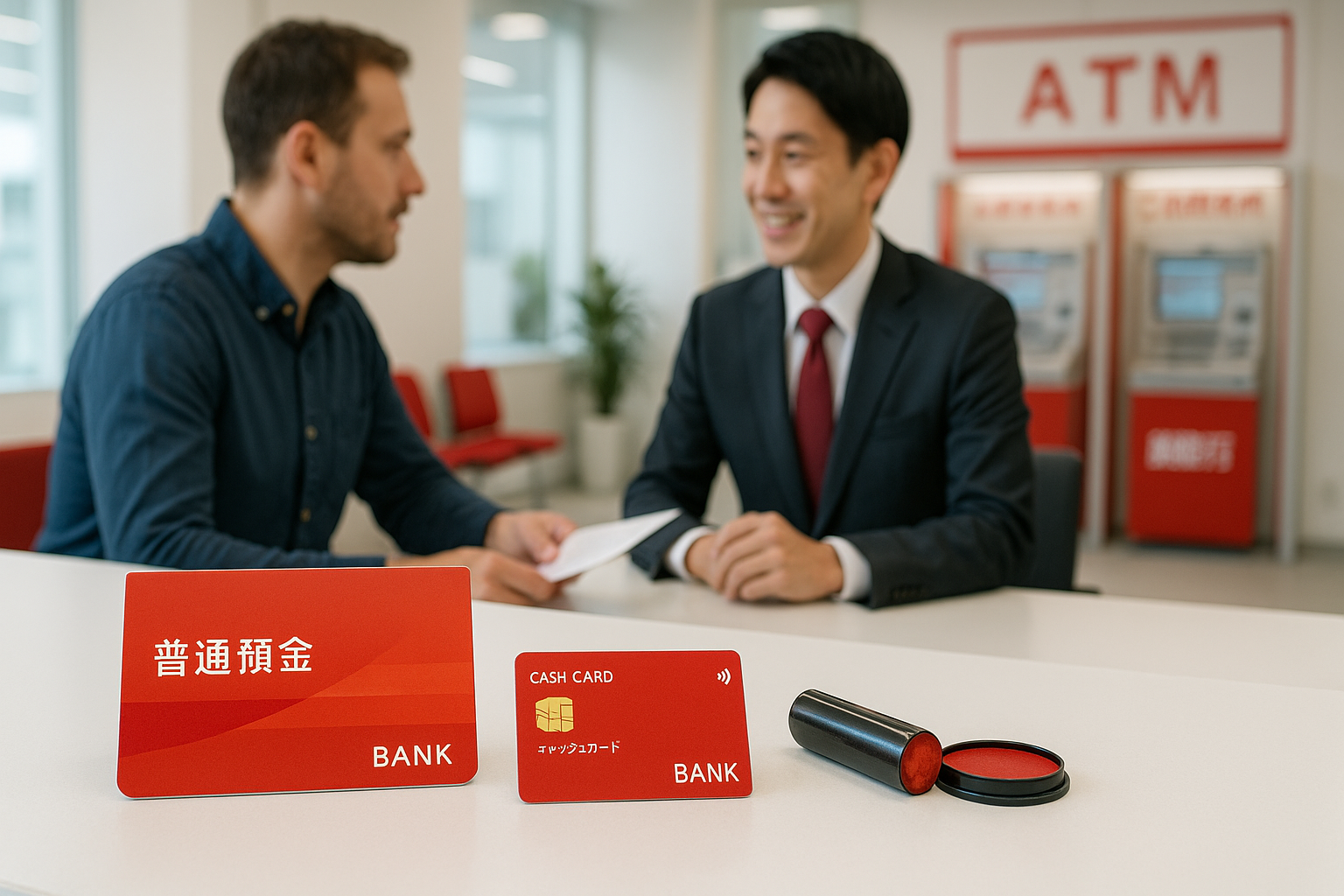Introduction
Opening a bank account in Japan is essential for receiving your salary, paying rent, utilities, and signing phone contracts.
By law, foreigners with a stay of less than six months are classified as non-residents and cannot open a regular bank account. They are only eligible for a special Non-Resident Yen Deposit Account.
👉 Read more: Non-Resident Yen Deposit Account in Japan: A Complete Guide↗
But in reality, the situation is not always so strict. Some banks allow foreigners to open an account after staying in Japan for more than three months. This is the practical rule that most newcomers will face, and it becomes the key point to understand.
Where to Open an Account
For most foreigners, realistically the following banks are the main options:
Japan Post Bank (ゆうちょ銀行)
- Minimum stay requirement: 3 months or more
- Where you can open: At the counter, via the official website, or through the official app
- Required documents: Residence Card only (for counter applications)
※ Residence Card = 在留カード - Number of branches: 233 (2025)
💡 In a 2022 survey, over 70% of foreign residents who opened bank accounts chose Japan Post Bank. Its nationwide coverage, multiple application channels (counter, website, app), and relatively low barriers make it the easiest choice for most newcomers. The official app supports 4 languages, while the website supports 15 languages, making it especially foreigner-friendly.
👉 Open bank account via Website (supports 15 languages)
👉 Open bank account via App (supports 4 languages)
Mizuho Bank (みずほ銀行)
- Minimum stay requirement: 3 months or more, if employed by a Japanese company (Employee ID or employment certificate required)
- Where you can open: At the counter or via the website
- Required documents:
- Residence Card
- Employee ID / Employment Certificate (especially for Student or Technical Intern visas)
※ Residence Card = 在留カード
- Number of branches: 320 (2025)
💡 Mizuho is flexible compared to other private banks for employed foreigners, but requirements depend on your visa type.
👉 Mizuho Bank English Guide (PDF)
👉 Mizuho Bank FAQ: How can I open an account at Mizuho Bank?
SMBC Bank (三井住友銀行)
- Minimum stay requirement: 6 months or more after arrival
- Where you can open: At the counter or via the website
- Required documents: Residence Card only (for counter applications)
※ Residence Card = 在留カード - Number of branches: 455 (2025)
💡 SMBC Bank allows online applications, but foreigners usually need to wait until they’ve been in Japan for at least 6 months.
MUFG Bank (三菱UFJ銀行)
- Minimum stay requirement: 6 months or more after arrival
- Where you can open: At the counter only
- Required documents: Residence Card only
※ Residence Card = 在留カード - Number of branches: 415 (2025)
💡 MUFG Bank is Japan’s largest bank, but for foreigners it often has stricter requirements. Online and app-based openings are limited to Japanese nationals.
👉 MUFG Bank Account Opening (English)
👉 MUFG Bank Personal Banking (English)
👉 Tip: If you’re unsure, Japan Post Bank is the most practical option, especially for newcomers staying more than 3 months.
What to Bring (Checklist)
When opening a bank account, bring the following:
- Residence Card (在留カード)
Recommended:
- Passport
- My Number Card (マイナンバーカード) or My Number Notification Card (マイナンバー通知カード)
- Hanko (判子) / Inkan (印鑑) — personal seal. Basically, there is no difference; both words refer to the same thing, and some banks require it.
- Student ID or Employee ID – Sometimes requested for confirmation.
- Resident Record (住民票 / Juminhyo) – May be required, especially if you just moved.
💡 Tip: Some banks may accept a signature instead of a seal, but not all.
How to Open: Step-by-Step
- Take a number ticket at the bank counter.
- Say: 「銀行口座を開設したいです」 / “I’d like to open a bank account.”
- Fill out the application form → name (same as Residence Card), birthdate, address, phone number, employment status.
- Present your documents (Residence Card, Passport, My Number, seal if required).
- Staff confirms details and may ask questions about why you need an account (salary, living expenses, etc.).
- Receive your passbook (通帳) and/or cash card (キャッシュカード). Sometimes the card is mailed within 1–2 weeks.
Common Problems (to Avoid)
- Short-term visa rejection → If your stay is less than 3 months, most banks will not allow account opening.
- Address mismatch → Make sure the address matches exactly with your Resident Record (住民票 / Juminhyo). Even small differences (e.g., missing room number) may cause delays.
- English support → Most banks have limited English support. If this is a concern, choose Japan Post Bank, which is generally considered the most foreigner-friendly option.
- Dormant accounts → If you don’t use your account for many years, it may become inactive and require reactivation.
After Opening: What will you do?
- Activate your cash card → Use it at ATMs to withdraw, deposit, and transfer money.
- Keep your passbook safe → Many banks issue one for transaction records.
- Set up automatic payments → Utilities, rent, and phone bills can be paid automatically from your account.
- Register for online banking → Useful for checking balances and making transfers, though setup may be in Japanese only.
Conclusion
Opening a bank account in Japan is a key step for stable living. With the right documents and preparation, the process is straightforward.
Choose between Japan Post Bank, Mizuho Bank, SMBC Bank, or MUFG Bank, avoid common mistakes like missing documents or address mismatches, and set up your payments early. Once your account is ready, managing your salary, bills, and daily life becomes much easier.
Note: This article is written for foreigners living in Japan or planning to move to Japan. Conditions and requirements may vary depending on individual circumstances.




